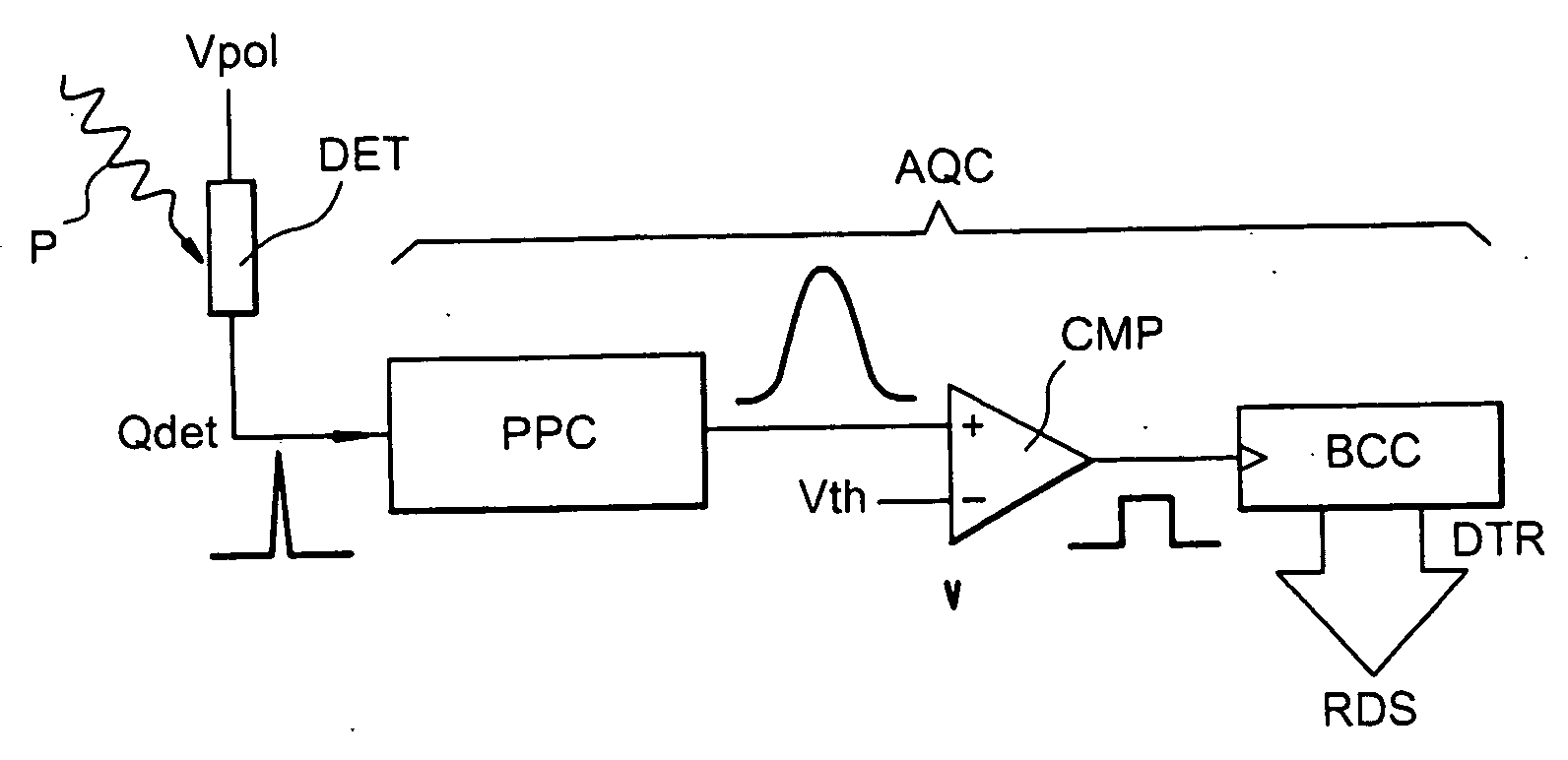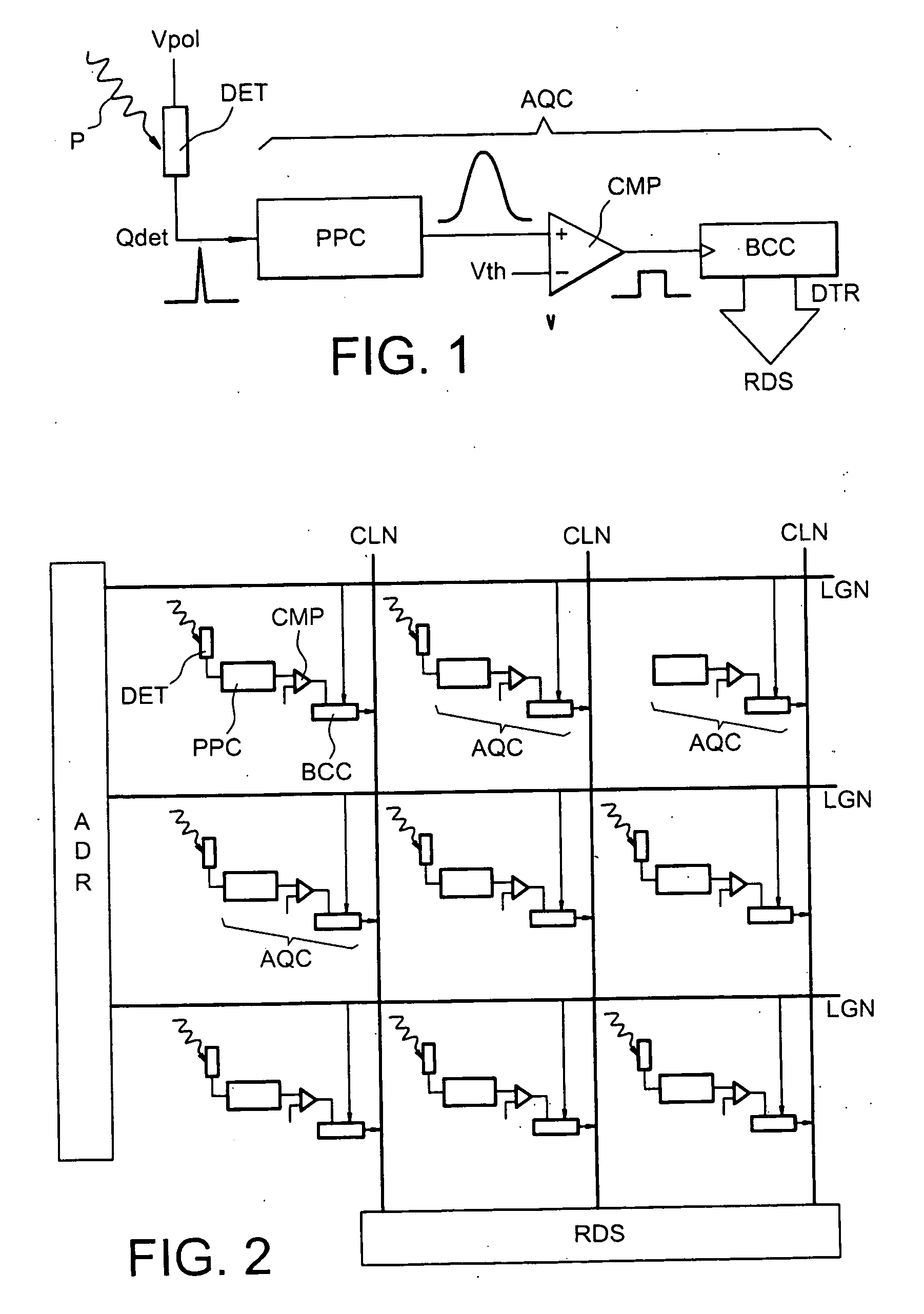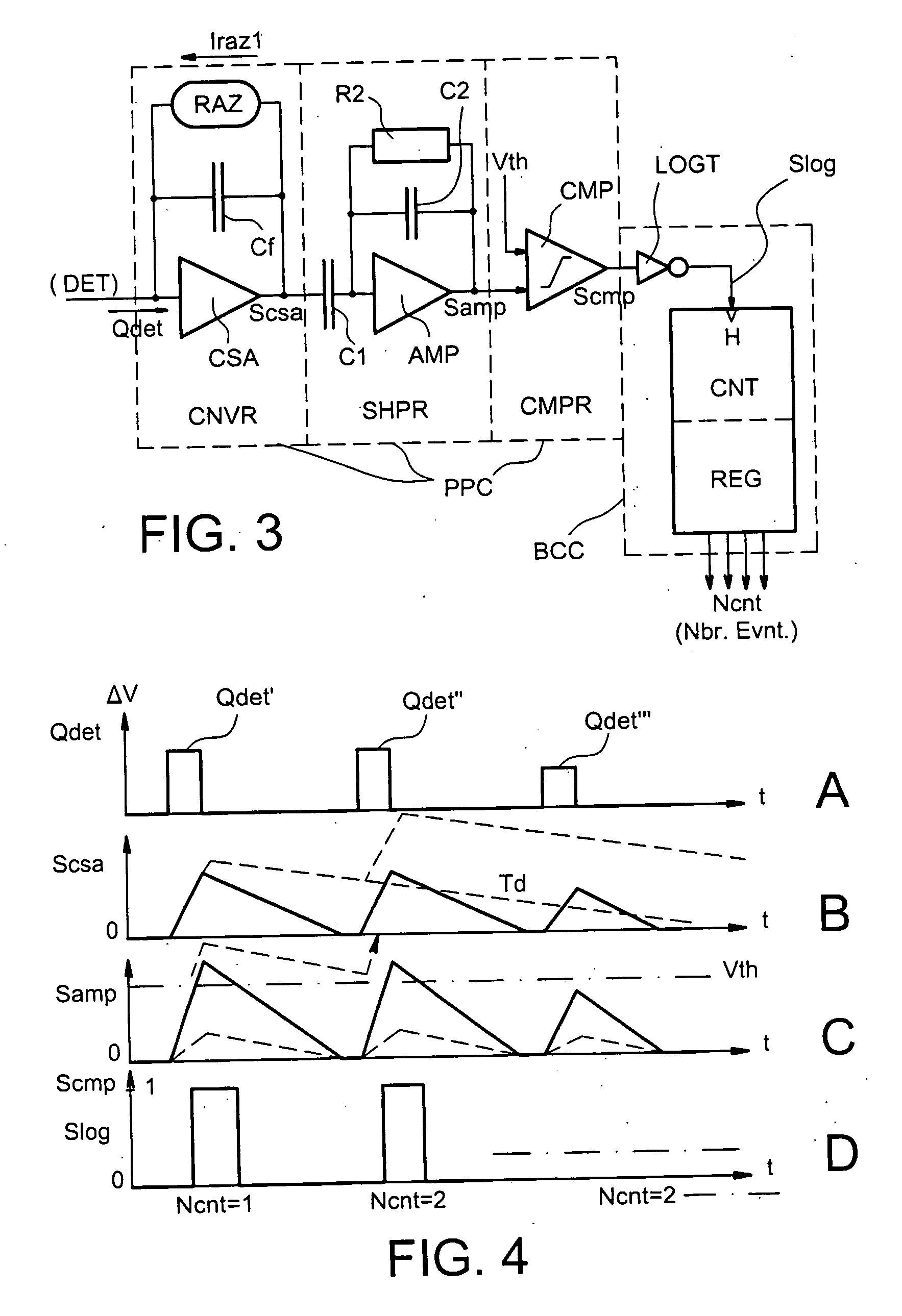Radiation detecting system with double resetting pulse count
a technology of detecting system and pulse count, which is applied in the direction of radiation intensity measurement, instruments, material analysis, etc., can solve the problems of increasing the overall consumption of the acquisition chain, existing devices suffering from several limitations, so as to reduce the fall duration of the signal and increase the rise amplitude
- Summary
- Abstract
- Description
- Claims
- Application Information
AI Technical Summary
Benefits of technology
Problems solved by technology
Method used
Image
Examples
Embodiment Construction
[0110]FIG. 7 illustrates a wiring diagram of an acquisition chain of a pixel or detector component DET of a radiation detection device according to the invention.
[0111] The detection entity (not shown) may be a detector unit, a group of discrete detector components or one or more layers of detector material forming a continuum of elementary detectors corresponding to a network of pixels.
[0112] The acquisition chain includes an analog portion PPC forming a circuit for processing and shaping pulses from the detector DET, followed by a logic portion BCC forming a binary counting circuit.
[0113] The analog portion PPC consists of a charge conversion stage CNVR with a CSA amplifier mounted as an integrator, followed by a pulse-shaping stage SHPR with an amplifier AMP in a band-pass filter circuit, and a third threshold crossing detection stage CMPR with an amplifier CMP in a comparator circuit.
[0114] The logic portion BCC includes a digital counting circuit NCT with a register REG wit...
PUM
 Login to View More
Login to View More Abstract
Description
Claims
Application Information
 Login to View More
Login to View More - R&D
- Intellectual Property
- Life Sciences
- Materials
- Tech Scout
- Unparalleled Data Quality
- Higher Quality Content
- 60% Fewer Hallucinations
Browse by: Latest US Patents, China's latest patents, Technical Efficacy Thesaurus, Application Domain, Technology Topic, Popular Technical Reports.
© 2025 PatSnap. All rights reserved.Legal|Privacy policy|Modern Slavery Act Transparency Statement|Sitemap|About US| Contact US: help@patsnap.com



